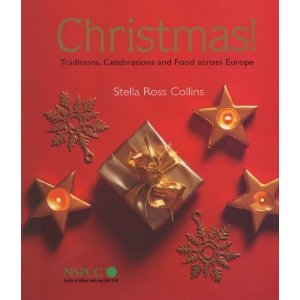
In Finland, Christmas Eve is the traditional time to set up the Christmas tree and it's also traditional to visit the sauna and for families to listen to a broadcast of the national 'Peace of Christmas' on the radio. Christmas Dinner generally consists of a main dish of boiled codfish that is snowy and fluffy in appearance, served with cream sauce and boiled potatoes. Christmas dinner is rounded out with roast suckling pig or roasted fresh ham and vegetables. Among peasants, there is a tradition to tie a sheaf of grain, with nuts and seeds, to a pole that is put in a garden for birds. Many peasants will wait until after the birds have eaten before having their Christmas Dinner. And Santa Claus is expected to visit homes in person with his Christmas elves to give out Christmas gifts.
Christmas in France is called Noel, from the phrase 'les bonnes nouvelles,' or 'the good news,' which refers to the gospel. On Christmas Eve, cathedrals and churches are beautifully lit and filled with the sounds of Christmas carols, ringing church bells and carillons. The tradition among children is to put their shoes by the fireplace for Pere Noel or le petit Jesus to fill them with gifts.
In the north of France however, children receive gifts on Dec. 6, St. Nicholas Day, instead of Christmas. Most French homes will have a Nativity scene or crèche on display during the season. In Southern France, some people will burn a log in their home from Christmas Eve until New Years Day, which comes out of a farming tradition of using the log for good luck in the coming harvest. The French also make a traditional cake called the buche de Noel, or Christmas Log, which is shaped like a Yule log and is part of a late supper called le reveillon held after Midnight Mass on Christmas Eve. The main dish for this meal generally consists of poultry, ham, salads, cake, fruit and wine but varies according to region. The main course in Burgundy is turkey with chestnuts and in Paris it's oysters, foie gras and the buche de Noel cake. The wines generally served are Champagne, Muscadet, Sauterne and Anjou. An annual tradition of puppet shows, particularly in Paris and Lyons, is popular during Christmas time. In Paris, it's also popular for big department stores to have grand, animated window displays.
Christmas in Italy is called 'Il Natale,' or 'the birthday.' Christmas season starts eight days before Christmas, a period called the Novena, and runs for three weeks. During the Novena, children dress as shepherds and go from house to house saying Christmas poems, singing and playing pipes. They often receive money to buy gifts during this activity. The Nativity scene, called the Presepio, has miniature figures, carved in great detail out of clay or plaster, of the Holy Family in the stable and is the center of Christmas for families. Families say prayers and children recite poems around the Presepio. Christmas Eve dinner, called cenone, is a traditional dish of roasted, baked or fried eel.
In some regions, various types of fish is prepared for this dinner, as well as pork, sausage in a pig's leg or turkey stuffed with chestnuts. Christmas sweets are called panettone and traditionally have nuts and almonds. On Christmas Eve, children set out their shoes for a kind, old woman or ugly witch called La Befana, who rides on a broomstick down chimneys, to fill them with gifts of toys or candies. If they were bad, their shoes will be filled with coal. Some children wait until Jan. 6, the Epiphany, to receive gifts.
Norway is where the tradition of the Yule log started and which gave rise to log-shaped cakes, cheese and other desserts during the holidays. Norwegians today often go into the forest to cut their own Christmas trees, which is secretly decorated on Christmas Eve to surprise children. After the Christmas tree is revealed, Norwegians engage in 'circling the Christmas tree,' a tradition in which everyone joins hands forming a ring around the tree. They then walk around the Christmas tree singing carols. Gifts are distributed after this ritual is finished.



